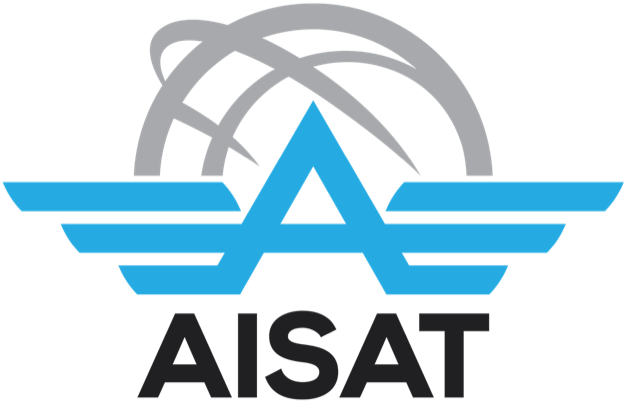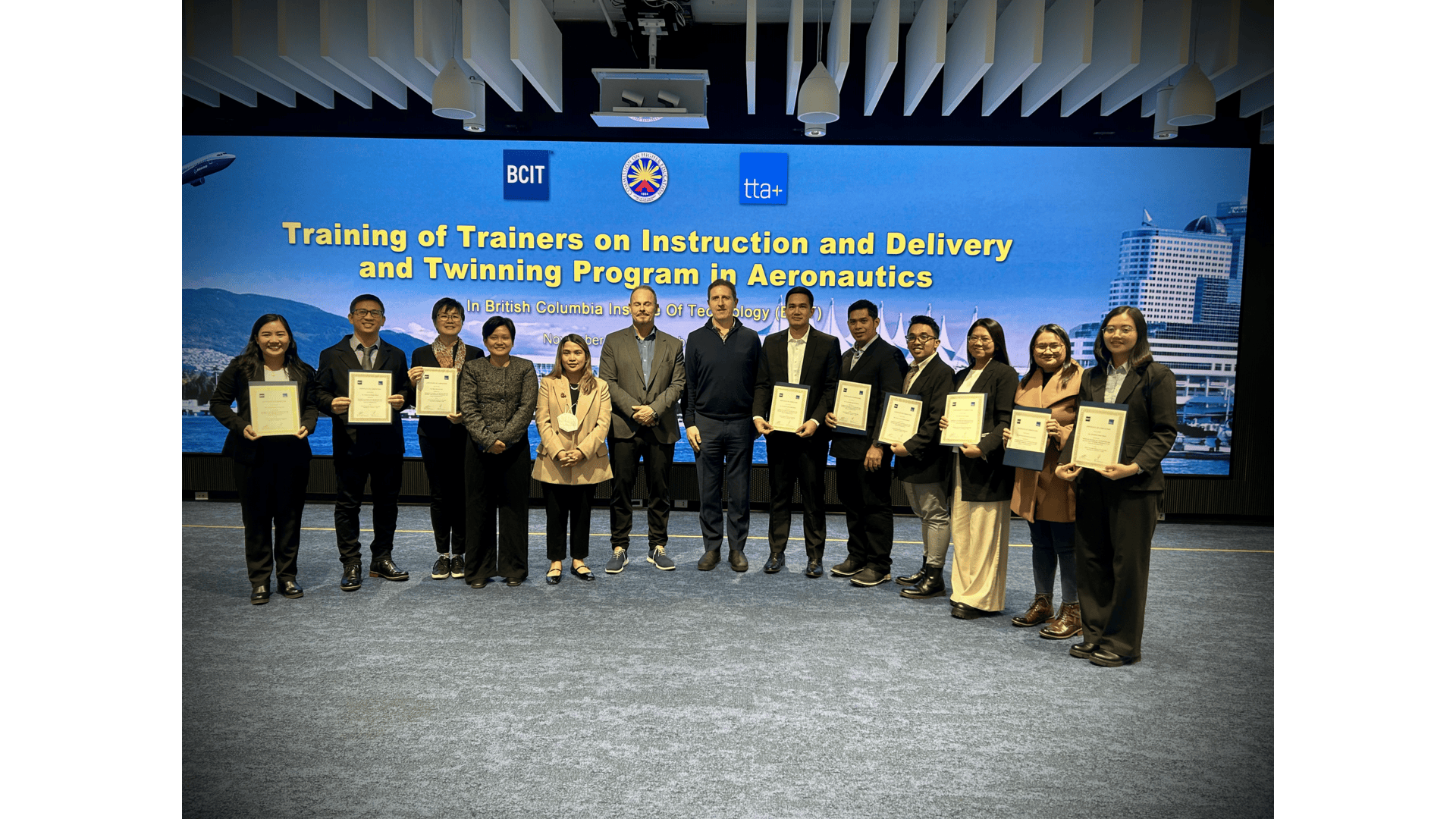December 15, 2024
by Myra Ann Wee Toe-Hio
An AISAT team, composed of 9 members from the faculty and staff, was privileged to be beneficiaries of the HUSAY grant by the CHED. The grant was delivered by the British Columbia Institute of Technology (BCIT) in Vancouver, Canada, under the program “Training the Trainers on Instruction and Delivery Twinning Program in the Field of Aeronautics.” The initiative by Chairman J. Prospero “Popoy” E. De Vera III aimed to expose and train aviation schools to BCIT’s standard of education and delivery methods. The 12-day exposure and training were an eye-opener for the AISAT team, not only on the BCIT’s quality programs but also the Canadian experience.
The two-week packed training schedule arranged by BCIT gave the Philippine delegate, representing 8 schools, an overview of the Canadian federal system of government, which does not have a centralized agency like the CHED to oversee higher education delivery. Instead, it is the province (British Columbia) that oversees education delivery and, by law, mandates colleges and institutions to organize committees within the institutions to determine what courses to deliver, to ensure quality in program delivery, and to ensure that the programs are always responsive to industry needs. BCIT is government-owned and receives funding to subsidize students’ tuition fees, fund needed facilities, and support instructors. They work closely with the government, which determines the number of slots that should be offered based on industry needs and funding available. The result is a carefully planned program delivery and a high placement rate for BCIT graduates.

Nine (9) AISAT representatives posing on the seaport of Vancouver, a coastal city in British Columbia
BCIT trains students in aviation maintenance under the guidelines issued by Transport Canada, guided by the Canadian Civil Aviation Authority. Transport Canada is the government agency responsible for issuing licenses to aircraft maintenance engineers (synonymous with our AMT or AMS in the Philippines). After a rigorous training of four semesters, an aircraft mechanic must gain work experience for at least 30 months and ensure that the checklist of tasks required for licensing purposes is completed. Thereafter, the applicant takes his civil regulations exams and, upon completion, will be able to obtain his license. Like the Philippines, three ratings are available: Structures, Maintenance, and Electronics. Although the Transport Canada license is not transferrable to the Federal Aviation Authority (FAA) or the European Union Aviation Safety Agency (EASA), it is held in high esteem in the aviation world.
Aside from aviation or aerospace, the BCIT School of Transportation trains students in automotive, marine, motive power, technology management, and trades access, all delivered in different training locations suitable for the purpose. To ensure that students are well equipped to enter the workforce, BCIT exposes students to cutting-edge technology, such as electric vehicles like Tesla. In fact, the institute’s relationship with the industry is so tight that even companies like Honda set up workshops and classrooms on campus. These areas are used either by BCIT students or by the sponsoring company when they need a training venue for their own staff. BCIT also takes pride in its teaching and learning process, devoting an entire department to train instructors with no teaching experience but robust industry exposure. Previous industry practitioners’ passion for teaching is inspiring, and such an attitude motivates students to learn in their chosen trade.

AISAT Faculty and Staff enjoying the cold winter experience at Whistler, British Columbia, Canada
It wasn’t all work for the delegates as they had a day to explore Whistler, a world-renowned ski resort, and ride up the ski slopes. For most, it was their first time to see, feel, and thread on snow, so it was an incredibly exciting experience. The organizers also arranged a tour of the Capilano suspension bridge, where the trees, canyons, and the world-famous suspension bridge were decorated with Christmas lights. It was indeed a unique way to welcome the Christmas season.
The experience of training, visiting, and meeting the other delegates made a lasting impression on the AISAT team. It was hard to say goodbye to Canada. However, all good things do come to an end, and everyone was, at this point, eagerly wanting to be with family and loved ones again, accompanied by the renewed spirit of learning and re-learning- all for the benefit of AISAT as an ever-growing academic community.

